




The Little-Known, Life-Changing Health Summit
In this brand-new special report you’re going to discover 25 very common products that can accelerate early aging and cause disease that you may not be aware of, or aware enough of… (Please DO share this important report with loved ones!)
This report was prepared as a preface to In The Little-Known, Life-Changing Health Summit, where you will discover the most effective yet largely unknown non-drug, non-surgery, non-toxic steps you must take to look your best, feel amazing, avoid and overcome disease and live long doing it.
Each of the 21 interviews in the summit truly holds the potential to change your life, so you don’t want to miss a moment of this once-in-a-lifetime online event!
Copyright © 2021 The Art of Anti-Aging, LLC, All Rights Reserved.
https://www.theartofantiaging.com/
No part of this publication may be reproduced, stored in a retrieval system or transmitted in any form or by any means, electronic, mechanical, photocopying, recording or otherwise without the written permission of the publishe r.
Publisher: The Art of Anti-Aging, LLC
Disclaimer: For educational use only. The entire contents of the book are based upon research conducted by the author, unless noted otherwise. This book and the information contained within are not intended to diagnose or prescribe for medical or psychological conditions nor to claim to prevent, treat, mitigate or cure such conditions. The author and publisher are not recommending specific products as treatment of disease and do not have any interest in the sale of the substances described in this book. This information should not replace the opinions of a medical professional.
In this important report, you’re going to discover 25 very common products that can accelerate early aging and cause disease that you may not be aware of … or aware enough of.
So, let’s start with a statement …
What you put in is what you get out.
That’s about as true as it gets when it comes to a “golden rule” for looking and feeling your best now, avoiding and even overcoming disease, and living long doing it.
Now, when most people hear that, they think of the foods they put in their mouths and stomach.
And good thing, because food is obviously monumentally important …
In super summary, when it comes to foods, eat the real thing — the fresher and less processed the better. Veggies and fruits are your friends and will treat your body right. Even better if you choose organically grown to minimize residues of pesticides, herbicides and insecticides. Eating organic also means you’ll avoid GMOs—another super strategy for long term health — and is important for animal foods, too.
However … you also “feed” your body in other ways:
• Through your skin
•Through your lungs
•Even through your eyes and ears
However, other steps such as switching to natural hardwood flooring instead of carpeting, are bigger steps — and that’s OK. You can’t make all of these changes overnight, so remember rule No. 1 at all times: Please don’t panic.
As you read through, you’ll see that most of these are “low hanging fruit” — things you can pluck off the branch quickly and change easily. These small changes can have a faster and more positive influence than you can imagine on your health and the way you look and feel. So, take a deep breath, and let’s get started.
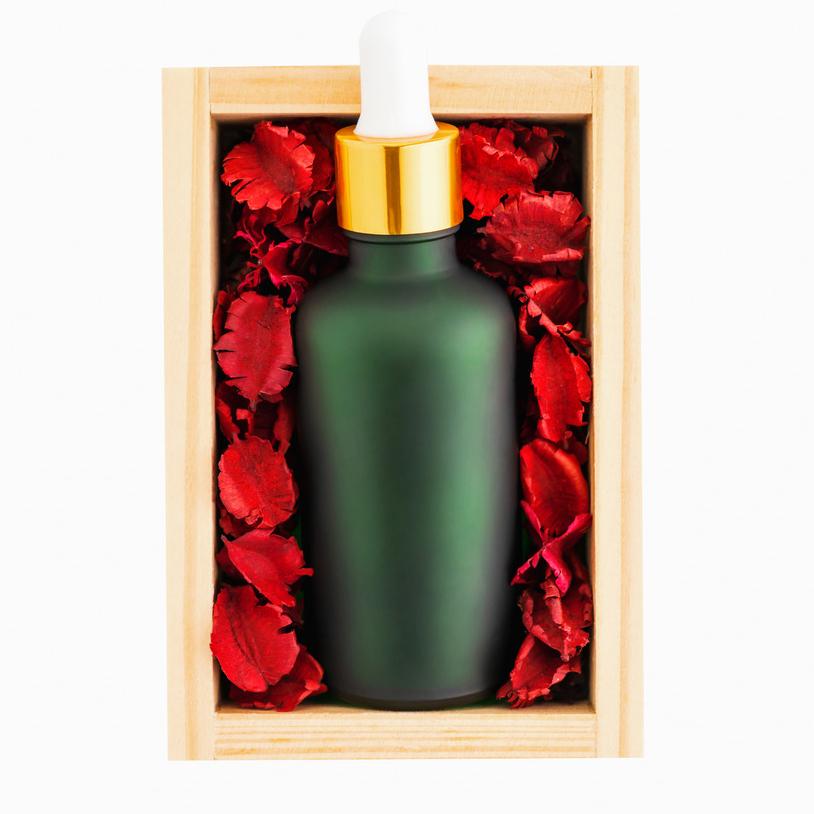
Many of those popular anti-aging, moisturizing lotions and potions for your skin contain chemicals that haven’t been tested for safety or, worse, have already been found to cause harm. In fact, the law that’s intended to protect the safety of personal care products hasn’t had an overhaul since 1938 — more than 80 years ago. 1
If it’s a well-known brand sitting in a big box store, or even one at a department store, it probably contains multiple chemicals of concern, from alpha and beta hydroxy acids, which exfoliate the outer layer of your skin, leaving it more susceptible to damage from the sun, to fragrance, a catch-all term that can apply to more than 3,000 2 chemicals. 3
Instead, choose only products with the USDA Certified Organic seal — these are the ones that contain only safe, pure ingredients for your skin (and remember that whatever you put on your skin goes into your body, leading me to the next point … ).
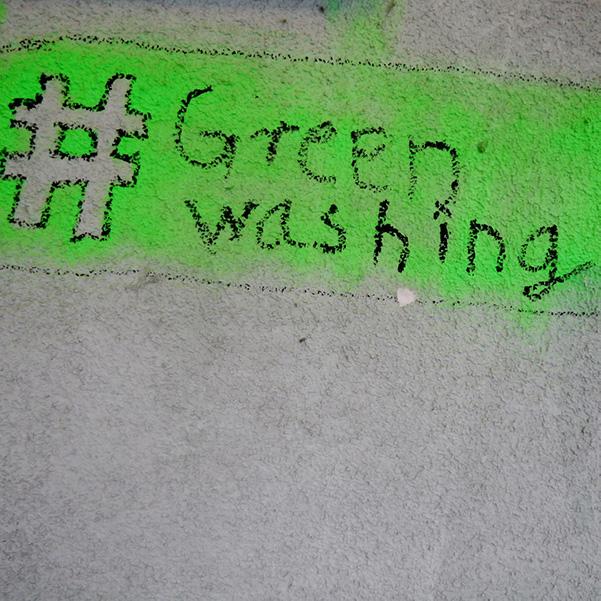
Be very leery of cosmetics that merely state “organic” on the label (or “natural” and other pure-sounding terms) but that don’t show the USDA Certified Organic badge or another trusted independent certification, such as those in other countries.
Because the truth is, the U.S. Food and Drug Administration (FDA) doesn’t really define or regulate the term “organic” and all the other pure-sounding claims on cosmetics, body care or personal care products.
And in a practice often labeled “greenwashing,” so many cosmetic companies frankly try to bamboozle people into buying their products by slapping “organic” and other similar terms on their labels.
Sure, their products might contain one or even several “organic” or “natural” ingredients… but it may well be amongst several or many toxic, artificial, and/or non-organic ingredients containing pesticides, herbicides, and who-knows-what!
NOTE that if their products are truly organic, non-GMO, and safe, they can take the steps to have it independently verified as such to get the USDA Certified Organic designation (or the equivalent, such as in other countries.)
So, it begs the question… why aren’t they?
On cosmetics, the USDA Certified Organic Seal in short means the product is independently verified to contain a minimum of 95% organic ingredients, with the remaining 5% on an approved safe ingredient list.
“Due to confusion and lack of federal oversight, there are companies that use the term “organic” in their product names primarily as a marketing tool,” the nonprofit Environmental Working Group (EWG) reported, which 4 is why you need to look past “organic” and “wild-crafted” and similar terms and only accept the USDA Certified Organic label or equivalent strict independent certifications when it comes to products for your skin.
1. Alpha and Beta Hydroxy Acids (Lactic Acid and Glycolic Acid): By exfoliating the outer layer of your skin, it increases sensitivity to the sun, which will accelerate skin aging — not prevent it. 5
2. Hydroquinone: Popular in skin lightening products, this chemical may cause cancer, respiratory tract irritation, eye damage and ochronosis, a condition that causes your skin to thicken and turn bluish-grey. 6
3. Octinoxate: Also known as octyl methoxycinnamate (OMC), this 7 sunscreen chemical (also found in cosmetics, hair color and shampoo) has hormone-mimicking effects, potentially contributing to cancer and thyroid problems.
4. Parabens: Paraben in all of its forms, widely used as cosmetics’ preservatives, is a hormone-mimicking disaster that may harm development and reproduction, while making you fat. 8
5. Polyethylene Glycol (PEGs): Common in personal care products like facial cleanser and moisturizer, PEGs may be contaminated with carcinogens and act as penetration enhancers, making the dangerous chemicals more easily absorbed by your skin.
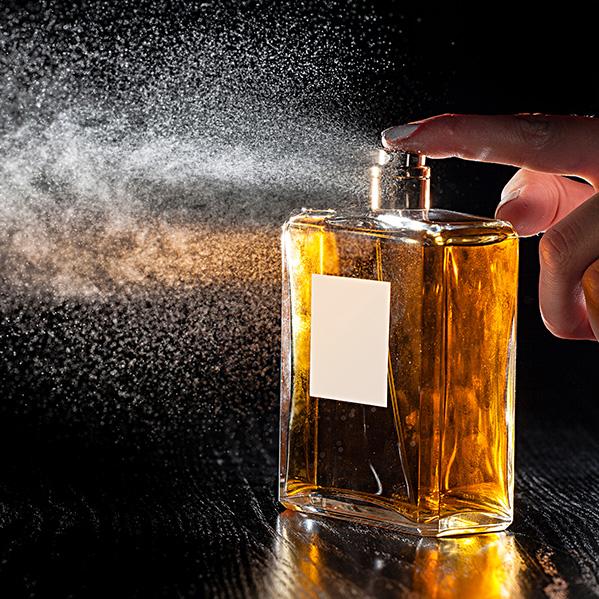
The global fragrance industry is worth $70 billion, but it’s hiding a dirty secret behind its 9 fruity, musky and floral undertones.
Perfume (and cologne and any other fragrance product) can contain any combination of dozens, or even hundreds, of chemicals, many of which have been linked to cancer, hormone disruption, respiratory damage and reproductive harm.
Fragrances are among the worst products to “feed” to your body, as the toxic ingredients don’t appear on labels, making it impossible to avoid them. Worse, when the Breast Cancer Prevention Partners (BCPP) tested beauty and personal care products, fragrance chemicals made up 75% of the toxic chemicals in the products. 10
Truly natural and organic essential oils (not to be confused with synthetic fragrance oils) are the exception, as they smell wonderful and have therapeutic properties that support health and well-being. Here, too, though, please do your homework, as some natural and organic essential oils can cause irritation and more if not properly diluted.

Like skin creams and serums, makeup — be it foundation, lipstick, eye shadow, mascara, nail polish or others — is full of chemicals that may disrupt your hormones, cause cancer or harm human development, a serious concern if you’re pregnant or breastfeeding.
Did you know there are 10,500 chemical ingredients that may be used in your makeup and other personal care products? And, “… a cosmetic manufacturer may use almost any raw material as a cosmetic ingredient and market the product without an approval from FDA." 11
So, as with all skin care products, choose ONLY those that bear the USDA Certified Organic seal — the gold standard for safe skin care and cosmetic ingredients.
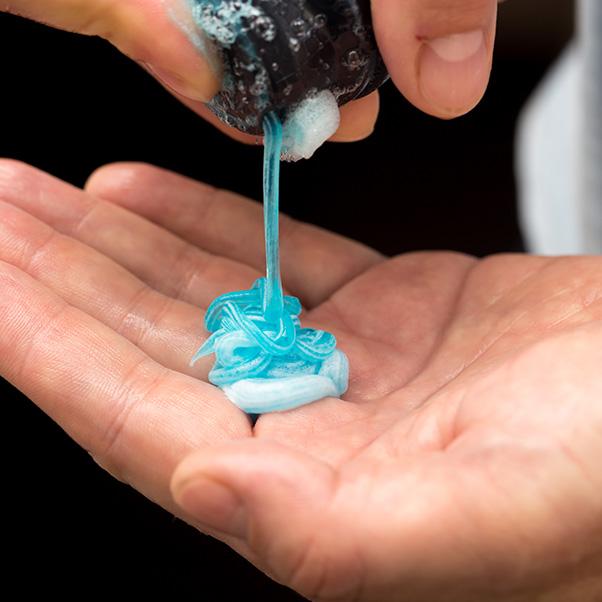
Polytetrafluoroethylene (PTFE) is a synthetic fluoropolymer chemical better known by the brand name Teflon.
Shaving gels are a popular usage for PTFE, which is used in cosmetics to give a slippery, smooth feeling (the same reason it’s used in nonstick pans), but avoid it when you can, as this toxin is linked to developmental problems, cancer, liver damage, immune effects, thyroid problems and birth defects.
Be aware, too, that PTFE goes by many other names, including polyfluoroalkyls or perfluoroalkyls (PFASs).
It’s best to avoid ingredients with “fluoro” in the name, and be on the lookout for it in products other than shave gel, too — an EWG study found 13 PFAS chemicals in nearly 200 personal care products that included 28 brands.
For a simple and safe shaving cream, consider coconut oil — it works like a charm.
“Feeding” It to Your Skin? Make Sure It’s USDA Certified Organic!
If you’re applying it to your skin, remember that your skin literally eats if the molecules in whatever you’re applying are small enough to be consumed… and unfortunately, so many of the toxic ingredients in so many products are small enough.

And unlike the foods you put in your mouth, which go through various “filters” to weed out some of the toxins, such as your liver, what you apply to your skin largely goes straight into your bloodstream!
Therefore, be certain that whatever you are “feeding” your skin is USDA Certified Organic -- or a similar trusted independent-of-the-company certification of purity, such as in other countries.
When you see the USDA Certified Organic seal, you’ll know the product contains at least 95% organic ingredients, and the remaining 5% must adhere to an approved safe ingredient list.
The word “organic” on its own is not enough, as no one is regulating the store when it comes to organic, natural or purity claims on your cosmetics. As a result, an “organic” product could still contain any number of toxic chemicals.
When you see USDA Certified Organic, that’s when you can rest easy, knowing the product, whether it be a skin cream or even your clothing and bed sheets, was created without pesticides, chemical fertilizers, synthetic dyes and GMOs, and with at least 95% organic ingredients.

Octinoxate, oxybenzone and other chemical filters of ultra-violet light are hormonedisrupting chemicals that may mimic your hormones, while their penetration-enhancing ingredients allow the chemicals to readily flow into your body.
An FDA study even revealed that applying chemical sunscreens to your body increases levels of the active ingredients (in this case avobenzone, oxybenzone, octocrylene and ecamsule) in your bloodstream at “concentrations that exceeded the threshold established by the FDA for potentially waiving some nonclinical toxicology studies for sunscreens.”12
There’s no reason to risk such exposures, as mineral-based sunscreens, which use zinc oxide to block UV rays, are widely available.
Just make sure it’s a non-nanoparticle version, as nanoparticles may cause DNA damage, inflammation and mitochondrial dysfunction, so they’re 13 14 best avoided (some terms for nanoparticles include fullerenes, micronized zinc oxide, nano zinc oxide, micronized titanium dioxide and micronized quartz silica).
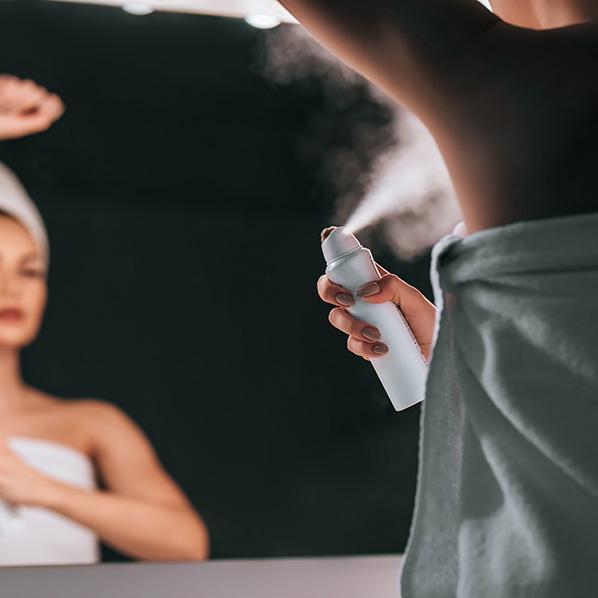
Deodorants, which block odors, and antiperspirants, which reduce perspiration, often contain PEGs, nanoparticles, parabens and triclosan, an antibacterial agent and endocrine disruptor linked to reproductive and developmental harm.
Antiperspirant may also contain aluminum, which has been found to generate “genomic instability” in breast cells and alter the “breast microenvironment,” leading to oxidative damage and inflammatory responses. As with other personal care products, look for 15 USDA Certified Organic as well as aluminum-free options.
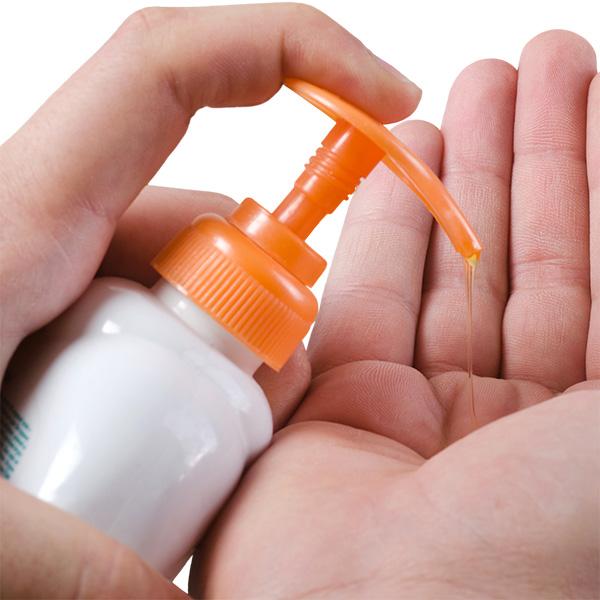
As the importance of the body’s microbiome becomes clear, taking steps to avoid products that may disrupt its delicate microbial balance is crucial, and this includes antibacterial soap.
Not only does it often contain toxic triclosan, but it’s no better at preventing infections than plain soap and water, so choose 16
USDA Certified Organic chemical-free soaps instead.

Clothes can be toxic? Very! The textile industry is one of the top polluters worldwide, contributing about 20% of industrial water pollution globally. If you 17 ever get caught up in fast fashion — buying the latest trends each season — this is part of the problem, as cheap clothing, and lots of it, is putting a heavy burden on the planet.
Every year, 43 million tons of chemicals are used in textile production, and this doesn’t even account for the pesticides used to grow cotton that’s made into clothes. 18
Aside from polluting water, air and soil, some of these linger on your clothes when you wear them (this is one reason why it’s so important to wash your new clothes before wearing them). Just to give you a quick idea of what kinds of chemicals might be in your clothing:
• Polyflourinated chemicals (PFCs), used to make water- and stain-proof clothing, which may cause liver problems and hormone disruption
• Azo dyes, which may release cancer-causing aromatic amines
• Heavy metals, like cadmium, lead and mercury, found in dyes and leather tanning, which may cause cancer or nervous system damage
• Formaldehyde, used to make wrinkle- and shrink-free clothing, which is a carcinogen
• Flame retardants, which act as hormone disruptors
When choosing clothing, look for organic, chemical-free brands and choose quality over quantity, keeping your clothes until they wear out.
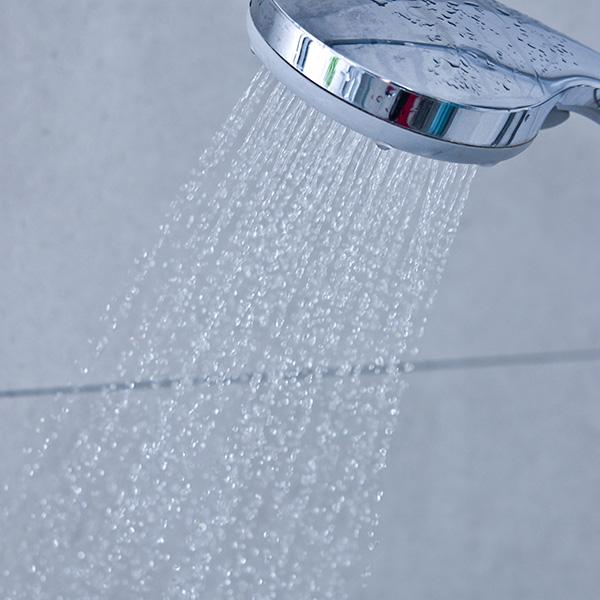
Every time you shower or bathe in chlorinated water, disinfection byproducts (DBPs), also known as trihalomethanes, enter the air. DBPs are formed from an interaction between chlorine and bromine and organic materials in the water, and they’re known to cause liver damage, decreased nervous system activity and possibly cancer.19
You can be exposed to DBPs when you breathe the steam from your shower, as well as via drinking water. When ingested over the long term, DBPs may harm fertility by adversely affecting semen quality. Installing a high-quality water filter made to 20 remove DBPs, at both your tap and your shower/bath, can solve this problem.
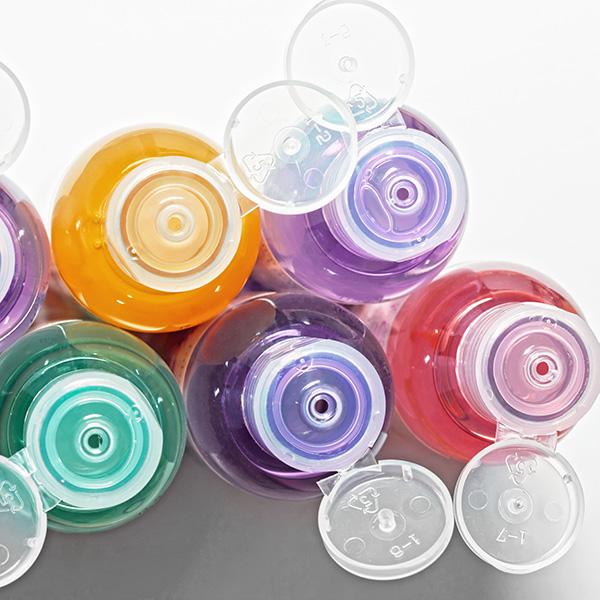
Suds-ing up your locks with most big brand shampoos is another unnecessary toxic exposure.
Several “red list,” i.e., the worst of the worst, ingredients commonly show up in big name shampoos, including ethanolamines, like 21 DEA (diethanolamine), an emulsifying agent that may cause cancer liver and kidney damage, neurotoxic effects (tremors) and problems with brain development and memory. 22
Other chemicals to take a pass on include all forms of parabens, chemical sunscreens (oxybenzone and octinoxate) and formaldehyde-releasing ingredients, including DMDM hydantoin, bronopol, diazolidinyl urea, imidazolidinyl urea.
These widely used preservatives pose cancer concerns, particularly since the longer you store such chemicals, and if they’re exposed to higher temperatures, as they probably are if you store your shampoo in your shower, the more cancer-causing formaldehyde they release. Look for 23 USDA Certified Organic shampoo to avoid these toxins.
Air pollution is a major source of toxic exposure as far as your lungs are concerned, but it can be difficult to do much about the air outside of your home — aside from moving to a pristine area with low pollution, a luxury few can afford.
What many do not realize, though, is that Americans spend about 90% of their time indoors, where air may actually be two to five times more polluted than outdoor air.24
This means that tackling indoor sources of air pollution should be top on your list, and is much more easily accomplished than tackling outdoor air.
Indoors, secondhand smoke is a major concern that can cause cancer and other health issues, but there are many others that are far less well-known and, depending on your circumstances, may be far more ubiquitous.

This is a big one and includes dozens of top offenders, from oven cleaner and bleach to ammonia and toilet bowl cleaners.
They release caustic chemicals such as hydrochloric acid, phosphoric acid, sodium or potassium hydroxide or ethanolamines, which cause lung irritation and inflammation.25
If you’ve ever felt dizzy, gotten a headache or had trouble breathing while cleaning your home, the cleaning chemicals were likely to blame.
Further, EWG has found that 53% of cleaning products contain chemicals that can harm your lungs, with toilet bowl cleaners, liquid laundry 26 detergents, tarnish removers and floor cleaners among the worst offenders.
For people who regularly use such products, long-term exposure has been linked to accelerated decline in lung function, which may damage lungs 27 as much as smoking a pack of cigarettes daily for 10 to 20 years.28
Homemade cleaners often work as well as the store-bought kind and can save your lungs and overall health. Vinegar, baking soda, essential oils and lemon juice are inexpensive and readily available to create a number of natural DIY household cleaners.

While you sleep, your mattress could be outgassing chemicals, including volatile organic compounds (VOCs) and flame retardants, into your bedroom, which you subsequently inhale.
Such chemicals are not only irritating to your respiratory tract but may also cause cancer, disrupt your hormones and harm your immune system or reproductive system.29
When choosing a new mattress, comfort is important, but don’t just shop around to see how it feels.
Make sure you choose a healthy mattress, which should contain at least 95% certified organic content, have low-VOC certification and be free from polyurethane foam (such as memory foam), flame retardants, fragrance, antimicrobials and PVC.

Your pillows, too, can outgas chemicals that are easily inhalable.
Foam pillows are among the worst, as they may release VOCs linked to cancer, damage to your liver, kidneys and central nervous system, headaches and even visual disorders and memory impairment.30
Your pillow is a double whammy of toxic exposure, as contact with your skin could also cause atopic dermatitis, or eczema.31
This one is an easy fix: when you’re in the market for new pillows, avoid synthetic petroleum-based foam and choose those made of natural wool, organic cotton, natural latex foam or plant-based fillings. The casing should be certified organic.

Flea and tick products for pets are toxic by nature, and when you apply them to pets, the chemicals migrate into the air and settle in household dust, which you later absorb via your lungs and skin.
One such chemical, tetrachloyinphos (TCVP), is used in flea and tick collars. It leaves residues on pets’ fur, which can then transfer to your hands and be absorbed via your skin.
TCVP is a nerve poison that’s particularly harmful to children’s developing brains, but anyone can be harmed by flea and tick treatments for dogs
32 and cats, as most are toxic to the nervous system. Others, such as those containing pyrethrins, are possible carcinogens linked to asthma and allergies as well.33
One way to protect your pets naturally is by giving regular baths (soap and water kills adult fleas), washing bedding often and inspect your pet for ticks after going on walks.
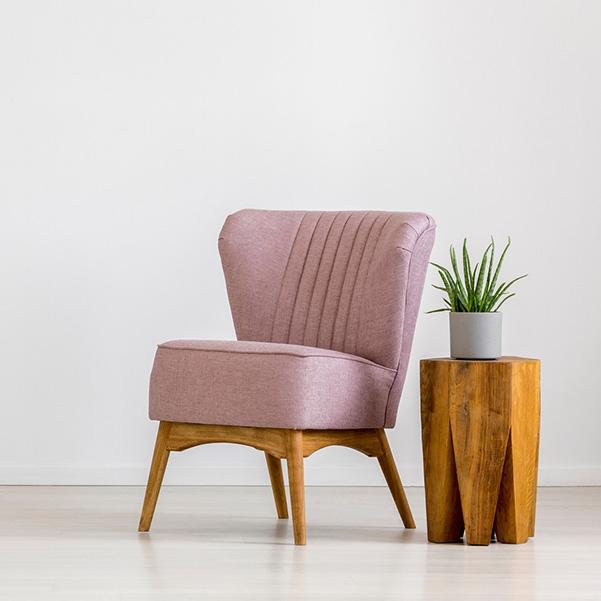
Furniture is problematic on multiple levels, depending on its material. Upholstery may contain polyurethane foam that contains flame retardants, with older relics (those from the mid-2000s and before) potential sources of polybrominated diphenyl ethers (PBDEs), 34 which are linked to thyroid problems, infertility and negative impacts on neurodevelopment.
When choosing upholstery, look for the TB117-2013 label, which reads, “The upholstery materials in this product contain NO added flame retardant chemicals.” 35
Composite wood products, such as particle board, fiberboard and plywood, are also harmful due to the potential to release cancer-causing formaldehyde into the air. These products are made from chips or particles of wood that are bonded using a resin, which may release formaldehyde.
Composite wood products are widely used to make furniture, cabinets, doors, flooring products, photo frames and more. Opt for furniture made from solid wood instead, and if you do bring composite wood products into your home, be sure to ventilate the area well.

Scented products can emit an average of 17 VOCs, including benzene and toluene, which are linked to cancer. 36
Other chemicals in air fresheners and scented candles can cause respiratory symptoms and lung dysfunction, while reacting with ozone in your air to create secondary pollutants like formaldehyde and ultrafine particles that may further damage your central nervous system and alter hormone levels. 37
In short, by trying to make your home smell good, you’re actually sending a toxic mix of chemicals into the air. There are far better ways that won’t harm your health, like putting pure essential oils in a diffuser or simmering a pot of spices (think cinnamon and nutmeg) on the stove.
All those chemicals in your home? They’re getting onto and into your pets, too, at levels even higher than in the humans. One study found that, compared to people, dogs had 2.4 times higher levels of PFCs (Teflon chemicals) while cats had 23.4 times more PBDE flame retardants and 5.4 times more mercury. 38
With their smaller body sizes and closer proximity to the floor, where they ingest household dust regularly, they face many of the enhanced risks of chemical exposures as do children.
Yet, there are eight times more pet dogs and cats in the U.S. than there are children under 5, making this an issue that matters to many. Pets can 39 even act as sentinels for human health, displaying health effects from environmental exposures decades before humans do. The good news is that as you make changes to protect your own health, your pet’s health will benefit too.

Wall-to-wall carpeting is one of the most toxic products in most homes, acting as a sink for toxic dust and allergens, acting as a reservoir for mold growth and emitting toxic chemicals (again, VOCs and, for older carpeting, PBDEs) into your home’s air.
If you have time to vacuum three times a week or more, using a HEPA-filter vacuum, this can help to mitigate some of the toxins, but if you’re like the rest of us (who are lucky to vacuum once every two weeks), strive to put in healthier flooring instead.
This is a longer-term goal, but one that’s worth investing in. Tile or wood are best, but if you want carpet look for wool options or those with lower VOC emissions (Green Label Plus or Greenguard Certified).
Stain- and water-proofing treatments should be avoided and choose lowVOC adhesives or no-adhesive hook fastener installation. 40
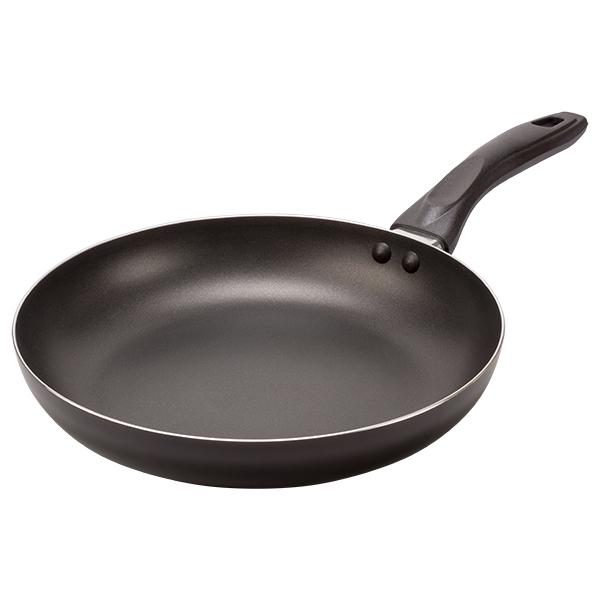
Nonstick pots and pans are undoubtedly convenient and easy to clean, but the chemicals used to make the slippery surface — PFCs — are proven to be toxic.
While some PFCs, notably PFOA and PFOS, have been phased out in the U.S., replacement chemicals pose many of the same health risks, which include liver toxicity, thyroid problems, hormone disruption, high cholesterol, obesity and more. 41
An easy way to reduce exposure is to swap out your nonstick cookware for safer options. Cast iron is one very good consideration, and if you want non-stick you can find cast iron with an enamel coating. Ceramic or ceramic-coated cookware is another good option. Stainless steel may not be the best choice for frying, but it’s a good choice for steaming and cooking. Titanium is a great all-around option, though it can be costly. Be aware, though, that PFCs are found in a wide variety of consumer goods, including fast food packaging, cosmetics, cleaning products and more.

Cooking spoons, spatulas, whisks and other utensils made of black nylon may contain primary aromatic amines (PAAs), including 4,4'-methylenedianiline (4,4'-MDA), a chemical linked to cancer. 42
Further, they’re not heat proof, only heat resistant, which means they can melt upon contact with hot surfaces and can also flake off into your food as they wear out.
Black plastic cooking utensils may even contain plastics recycled from electronics equipment, and as such could contain toxic flame retardants, heavy metals and PVC.43
Wood cooking utensils are an easy, safer fix, as are organic bamboo options.

Mothballs may remind you of your grandmother’s attic or closet, but hopefully you don’t actually use them in your own home … and if you do, get rid of them immediately.
These toxic concoctions are nearly 100% naphthalene or paradichlorobenzene, chemicals that may cause headaches, nausea, coughing, hemolytic anemia and eye and nose irritation in the short term and cancer, liver and kidney damage if exposure continues long term.
What’s more, moth balls are intended to release toxic vapors to repel bugs, but the fumes accumulate in enclosed spaces, acting as balls of poison to people or pets that get near them.44
This one is a simple fix: don’t use them.

Your printer, television, video game console and other electronics contain large quantities of flame-retardant chemicals, which migrate into your household dust. 45
This dust may be among the most toxic in your home, which is why it’s best to keep electronics well dusted (use a damp cloth or microfiber cloth to catch the dust, so it doesn’t get stirred up into the air).
Also, locate electronic devices as far away from your everyday living spaces as you can. Keep printers as far away as possible from your desk or anywhere you spend time.

The dust in your home is the literal conglomeration of not only dirt and dead skin cells but also all the chemicals that have migrated out of the toxic products described above (and many others like them).46
Within your home’s dust, you can expect to find pesticides, flame retardants, endocrine disrupters and more.
To give you an idea, one study detected 271 chemicals in 38 dust samples, some of them chemicals of “emerging concern” whose presence in dust has been underestimated. 47
You can’t eliminate dust, of course, but what you can do is keep it to a minimum.
Cleaning your home regularly will help, using a vacuum with a HEPA filter and a wet mop on your floors, along with a microfiber or damp cloth on other areas (avoid spraying the cloth with chemical sprays, which will only add to the problem).
High-quality air filters, changed frequently, can also cut down on the amount of toxins you’re exposed to via dust. The other silver lining to ridding your home of toxic products is that the fewer toxic products in your home, the less contaminated your home’s dust should be.

Blue wavelengths of light, which come from all the electronic things — televisions, computers, cellphones, tablets — as well as fluorescent and LED lights, are OK during the day but disruptive to your circadian rhythm at night.
Exposure to blue light at night has been found to disrupt sleep and may also be linked to cancer, depression, diabetes and heart problems as a result. To protect yourself, shut off your electronics 48 two to three hours before bedtime and use red lights for nightlights if you need to get up during the night.
If you work at night or have no intention of turning off your tablet until the wee hours, wear blue-blocking glasses or install an app on your device that will automatically filter out blue light at night.49

Yes, noise pollution is also a thing, so much so that it’s been referred to as a “modern plague.” If you live near a busy highway or 50 airport, the traffic noise may be making you depressed or anxious. Leaf blowers and 51 lawnmowers are another type of noise pollution, as are loud blenders and televisions and even hair dryers, if the sound interferes with your well-being.
Exposure to loud noise is linked with hearing loss, stress, disrupted sleep, high blood pressure and heart disease, with more than 100 million Americans affected. Metabolic health is also harmed by excess noise, 52 with a strong association between transportation noise in neighborhoods and the incidence of diabetes. 53
If you work in a noisy environment, you probably automatically wear ear protection, but be sure to also do so when using lawn equipment or loud power tools. If noise is a problem intermittently, noise-cancelling headphones will be your friend.
If you live in a noisy environment that you have no control over, doublepaneled windows can help, as can acoustic wall panels made to reduce noise. Installing a fence, which can absorb sound waves and vibrations, planting trees and situating your bedroom away from the source of the noise can also help.54
I’ve just shared a lot. Take a few minutes to breathe and let it all sink in. Digest it overnight if that helps, read this report multiple times if it helps, but then do take action.
One smart approach is to take the smaller, easy steps first, because they will make a big difference.
Throw away those potentially toxic skin creams and serums, shaving gels, antiperspirants, shampoos and other cosmetics and personal care products and replace with safe USDA Certified Organic products (or its equivalent, which in short means an independent-of-the-company verification you trust that it is truly organic and safe.)
Stop using unsafe cookware, cleaners, candles and air fresheners, and opt for the proven far safer choices there, as well. Reorganize electronics so they’re located as far from where you spend time as possible.
And so forth.
The point is, take the easier steps first, because it makes a world of difference. And then build toward making the bigger and more costly changes, such as replacing mattresses and carpeting.
Because, on the one hand, there’s no such thing as completely “toxin-free” living. This is why you’ll want to take the most powerful steps you’ll discover throughout the online Little-Known, Life-Changing Health Summit to detoxify your body and build your immune system to best defend against toxins.
But on the other hand, with each toxic product that you eliminate or replace with something safer and smarter, you’ll tax your body that much
less, you’ll grow that much healthier, and be able to live longer and enjoy your life that much more.
And really, that’s the whole point.
Here at The Art of Anti-Aging, the “anti” means we’re against all the destructive lies about getting older out there that equate hitting your 30s, 40s, 50s, 60s and beyond with becoming increasingly undesirable, incapable, doomed to suffering and disease, and “over the hill.”
We’re against all the toxic “solutions” and toxic thinking being pushed on people by the Big Cosmetic, Big Food, and Big Pharmaceutical industries, who so often play upon those destructive aging lies and manipulate people through fear and even “convenience” (as you’ve just seen throughout this report!)
Instead, we are certain that when you take the right steps, your “middle years” and “golden years” will truly be your best years.
And we are 100% committed to providing you the proven most effective health and wellness steps to achieve that… to look your best, feel amazing, avoid and overcome disease, and live a long life doing it.
The special report was a small taste of that (and please DO share this report with family and friends)…
Whereas the online Little-Known, Life-Changing Health Summit truly is the PINNACLE of our mission.
Because you’re going to get total clarity on THE most essential secrets you need to know now on how to look your best, feel amazing, avoid and even overcome disease, and live a long life doing it…
From 21 of the world’s most renowned and trusted anti-aging and longevity doctors and researchers.
And because you truly don’t want to miss a moment of this once-in-alifetime summit…
And because you’re going to want to listen and absorb all of these truly life-changing insights multiple times, when, where, and how YOU choose to do so…
Right now you’re getting…
Complete Recordings & Transcripts of The Little-Known, Life-Changing Health Summit, With a 100% GUARANTEE That It Will Change Your Life, With an Incredible Offer You’re Going to… Click Here Now to Find Out More About The Little-Known, Life-Changing Health Summit “Empowerment Package”



"There is so much crucial knowledge on how to look and feel younger, avoid disease and live longer that people aren't hearing nearly enough about. Natural health veteran Brian Vaszily is pulling together today's top anti-aging and longevity experts to reveal the most powerful of those little-known insights, and to say you don't want to miss this event is an understatement. Awaiting you within this summit are the answers you seek that will change your life."
Dr.Eric Zielinski, World-Renowned Natural Health Doctor

”People tend to hear the same basic health advice over and over, publicly doled out in drips and drabs—a magazine article here, a brief morning show segment there. Meanwhile, a world of evidence-based wellness pearls exists that can make a profound difference in how long and how well you live. My deeply insightful (and fun!) friend Brian Vaszily has gathered together many of today's top doctors and researchers who provide you the most powerful of those 'little-known life-changers.' Do yourself a favor and listen closely to this important summit!”
Dr. Kristi Funk, World-Renowned Surgeon & Breast Health Expert

"My friend Brian Vaszily, a natural health veteran with over 2 decades experience, had a challenging first half of life, to say the least. He's turned that into a mission to help others through whatever challenges they may be facing. Brian’s courage, passion, and wisdom shine through in his endeavors, and I know this summit will be an extraordinary next step. When you tune in, and apply what you learn, your life will grow in health and in happiness.”
Ocean Robbins, Co-founder, Food Revolution Network
doi: 10.1080/19440049.2010.487500.
Sci Technol. 2018 Mar 6;52(5):2878-2887. doi: 10.1021/acs.est.7b05767. Epub 2018
South Med J. 2007 Mar;100(3):287-94.
Int J Hyg Environ Health. 2015 Jan;218(1):1-11. doi: 10.1016/j.ijheh.2014.08.002. Epub 2014
Sep 3.
American Journal of PrevenFve Medicine September 2015, Volume 49, Issue 3, Pages
345-353
Environ Health Perspect. 2017 Aug 31;125(8):087025. doi: 10.1289/EHP1279.